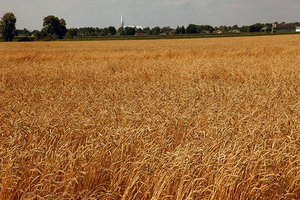With the harvest season in full swing, growers in much of the U.S. face grain handling challenges due to unique weather conditions throughout the year. Persistent droughts and hotter weather in many states have caused grain to dry more quickly.
To prevent crops from becoming too dry and delicate, growers will have to move fast to complete harvests — but also be careful to avoid hasty mistakes. Review the following tips to ensure your harvest is as successful as possible.
- 1. Prioritize Fields with Poor Stalk Quality: The stability of corn stalks is a top concern this harvest season. Late-season droughts cause corn stalks to degrade quickly, in addition to causing leaves to brown and ears to drop. It’s critical to harvest fields with standability issues early before too many plants fall and can’t be picked up by harvesters.
- Similarly, lodging (stalk breakage below the ear) also leads to poorer yields and extra harvest time. Lodged acres will also need to be prioritized early in the harvest to prevent further lodging as a result of weather or disease.
- 2. Adjust Combine Settings Frequently: Maximizing grain yields requires meticulous adjustments to combine settings to ensure machine loss is limited. And given variable field conditions this year, you may need to adjust combine settings multiple times when harvesting the same field — including settings on combine heads, threshing and separating units, and making adjustments to fan and sieve speed.
- 3. Measure Harvest Losses: To ensure equipment is calibrated correctly, it’s critical to periodically measure harvest losses. The amount and pattern of unharvested grain that remains in a field after the combine passes through offers clues to adjustments that can be made to improve collection, threshing, and separating. When measuring harvest losses, it’s important to assess a 15-20 foot area away from the edges of the field and follow established guidelines for counting and calculating grain loss.
- 4. Follow Grain Storage’s Best Practices: With overly dry grain, precautions are necessary to prevent dust and mold during long-term grain storage . If you don’t plan to clean grain before storage, be sure to core the bin by removing the grain from the cylindrical core that extends from the surface to the unloading sump. This eliminates the highest concentration of damaged kernels while ensuring aeration uniformity. Frequent aeration is key to preventing moisture build-up as the warm kernels cool.
- 5. Prioritize Safety: Harvest season is always a hectic period, but don’t deprioritize your own health and safety amid the scramble to maximize yields. Always wear a properly fitted NIOSH-approved respirator when handling grain to avoid breathing grain dust. It’s also important to stay hydrated and rested throughout the season so you can be alert while operating machinery.
The 2023 harvest season presents unique challenges for grain handling due to variable moisture levels, drought conditions, and grain damage. By following these tips, you can mitigate risks, minimize losses, and ensure a successful harvest.
If you’re in need of harvesting equipment , such as a combine or combine parts, John Deere has various equipment available just for you. You may contact your local John Deere dealer for more information and assistance.
